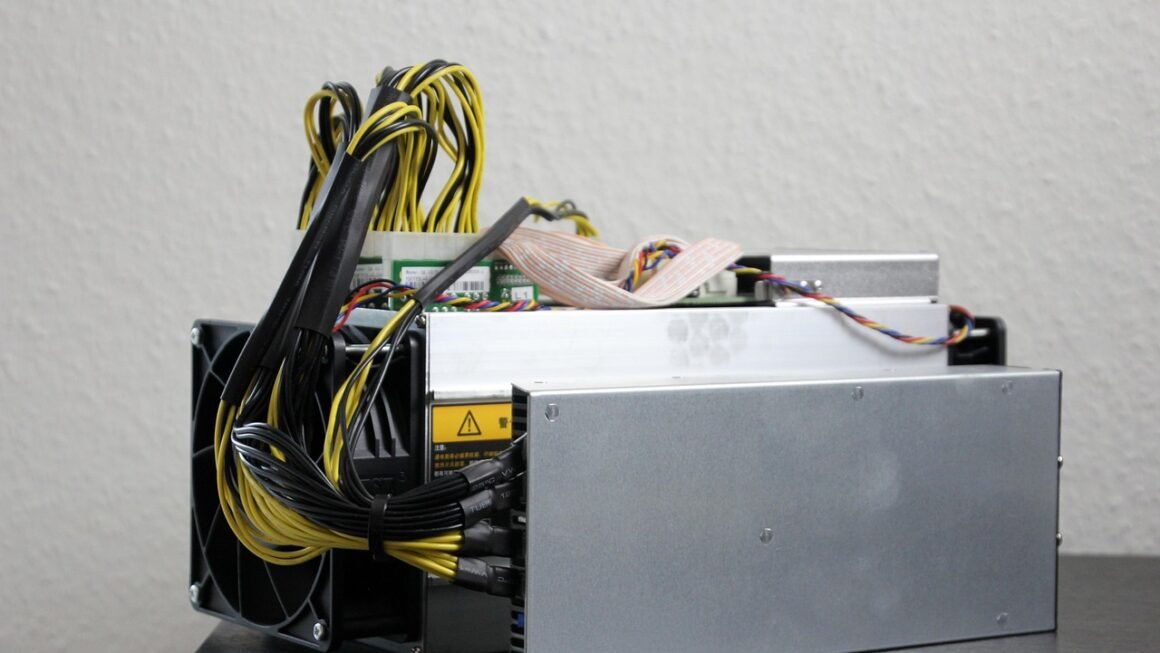Airdrops: Free crypto tokens raining down on you – sounds like a dream, right? While the promise of free crypto can be enticing, understanding the ins and outs of airdrops is crucial before diving in. This guide will explore what crypto airdrops are, why they exist, the different types you might encounter, and, most importantly, how to participate safely and avoid potential scams. So, let’s delve into the world of crypto airdrops and discover how you can potentially benefit from them.
What is a Crypto Airdrop?
Definition and Purpose
A crypto airdrop is the distribution of free cryptocurrency tokens or coins to numerous wallet addresses. Typically, airdrops are conducted as a marketing strategy to gain attention and increase the circulation of a new cryptocurrency project or token. It’s a way to reward early adopters, build a community, and create awareness around a project. Think of it as a digital marketing campaign on steroids.
- Goal: To promote a new cryptocurrency or blockchain project.
- Mechanism: Distribute free tokens to a large audience.
- Benefit for the Project: Increased visibility, community growth, and wider token distribution.
- Benefit for Recipients: Opportunity to acquire new tokens without initial investment.
How Airdrops Work
The process of participating in an airdrop generally involves completing specific tasks set by the project. These tasks can range from:
- Following the project’s social media accounts (Twitter, Telegram, etc.)
- Joining their community groups (Discord, Reddit, etc.)
- Subscribing to newsletters
- Holding a specific cryptocurrency in your wallet
- Participating in testnets or providing feedback
After completing these tasks, you usually need to provide your wallet address to the project team. If you meet the eligibility criteria, you will receive the airdropped tokens directly into your wallet. Keep in mind that providing wallet information should always be done with extreme caution. More on that later!
Common Airdrop Requirements
Airdrop requirements vary widely, but some are more common than others. Here’s a quick rundown:
- Social Media Engagement: Following and engaging with the project on social media platforms is often a primary requirement.
- Wallet Holding: Holding a certain amount of a specific cryptocurrency (e.g., ETH, BNB) in your wallet can qualify you for an airdrop.
- KYC Verification: Some projects require Know Your Customer (KYC) verification for compliance and fraud prevention. This typically involves providing personal information and identification documents.
- Task Completion: Completing specific tasks, such as writing articles, creating content, or providing feedback on the project.
Why Projects Conduct Airdrops
Marketing and Awareness
Airdrops are a highly effective marketing tool. By distributing free tokens, projects can quickly attract attention, generate buzz, and increase brand awareness. This visibility can translate into increased adoption and usage of the cryptocurrency.
- Example: Imagine a new decentralized finance (DeFi) protocol offering an airdrop to users who retweet their launch announcement. This instantly exposes the project to thousands of potential users, sparking interest and discussion.
Community Building
Airdrops can help projects build a strong and engaged community. By rewarding early adopters and active participants, projects can foster loyalty and create a sense of ownership among community members. This is crucial for the long-term success of the project.
- Example: A project might airdrop tokens to users who actively participate in their Discord server, answer questions, and provide helpful feedback. This incentivizes engagement and fosters a supportive community.
Decentralization and Token Distribution
Airdrops can help distribute tokens more widely, promoting decentralization and preventing concentrated ownership. A wider distribution of tokens can lead to a more resilient and sustainable ecosystem.
- Example: By airdropping tokens to a large and diverse group of users, a project can avoid having a few large holders control a significant portion of the token supply, which could potentially manipulate the market.
Types of Airdrops
Standard Airdrops
Standard airdrops are the most common type, where tokens are distributed to eligible participants who meet specific criteria, such as following social media accounts or joining community groups. These airdrops are usually straightforward and require minimal effort to participate.
- Example: A project announces an airdrop for anyone who follows their Twitter account and retweets their announcement.
Bounty Airdrops
Bounty airdrops require participants to complete specific tasks, such as writing articles, creating videos, or finding bugs in the project’s code. These airdrops are more involved but offer a higher reward potential.
- Example: A project offers an airdrop to users who write a detailed review of their platform or create a tutorial video demonstrating its features.
Holder Airdrops
Holder airdrops are targeted at users who already hold a specific cryptocurrency. Projects may airdrop tokens to holders of their native token or tokens from partnering projects. This rewards loyal supporters and encourages long-term holding.
- Example: A project airdrops its new token to users who hold a certain amount of their existing token in their wallets.
Exclusive Airdrops
Exclusive airdrops are typically offered to a select group of users, such as early investors, advisors, or members of a specific community. These airdrops often come with more stringent requirements and may offer larger rewards.
- Example: A project offers an exclusive airdrop to the first 1000 users who join their private Telegram group.
How to Participate in Airdrops Safely
Research and Due Diligence
Before participating in any airdrop, it’s crucial to conduct thorough research on the project. Look for information about the team, the technology, and the community. Check the project’s website, whitepaper, and social media channels. Be wary of projects that lack transparency or have unrealistic promises.
- Tip: Use reputable crypto news and analysis websites to research the project and gauge its legitimacy.
Use a Dedicated Wallet
To protect your primary cryptocurrency holdings, it’s advisable to use a dedicated wallet for airdrop participation. This helps isolate your main funds from potential risks associated with interacting with new and unverified projects. Use a new wallet, and only send a small amount of funds to it for transaction fees. This way, even if the airdrop is a scam, your main wallet and its holdings are safe.
- Example: Set up a new Metamask wallet specifically for airdrop participation.
Beware of Phishing Scams
Airdrop scams are prevalent in the crypto space. Be cautious of phishing attempts that try to trick you into revealing your private keys or seed phrases. Never share your private keys or seed phrases with anyone, and always double-check the website address before entering any sensitive information. Legitimate airdrops will never ask for your private keys.
- Red Flags:
Requests for private keys or seed phrases.
Suspicious website addresses.
Unrealistic promises of high rewards.
Pressure to act quickly.
Verify Official Channels
Always verify the official channels of the project before participating in an airdrop. Check their website, social media accounts, and community groups to ensure that the airdrop is legitimate. Be wary of fake accounts and imposter websites that mimic the official channels.
- Tip: Cross-reference information from multiple sources to verify the authenticity of the airdrop.
Stay Updated and Educated
The crypto space is constantly evolving, so it’s essential to stay updated on the latest trends and security threats. Follow reputable crypto news sources, participate in online communities, and educate yourself on best practices for cryptocurrency security.
Potential Risks and How to Avoid Them
Scams and Phishing
As mentioned, scams and phishing attempts are a significant risk associated with airdrops. Scammers often create fake airdrops to steal users’ private keys or personal information. Always be vigilant and double-check the legitimacy of the airdrop before participating. Never share your private keys or seed phrases.
Dusting Attacks
Dusting attacks involve sending small amounts of cryptocurrency (“dust”) to numerous wallet addresses. The goal is to track the transactions and potentially deanonymize the wallet owners. Be cautious of unsolicited tokens in your wallet and avoid interacting with them.
- Prevention: Avoid moving or spending the “dust” tokens.
Value Manipulation
Some projects may use airdrops to artificially inflate the value of their token. This can create a pump-and-dump scenario where the price is driven up temporarily, only to crash later, leaving investors with significant losses. Research the project’s tokenomics and be wary of projects with unsustainable token distribution models.
Legal and Tax Implications
Depending on your jurisdiction, receiving airdropped tokens may have legal and tax implications. Consult with a legal or tax professional to understand your obligations and ensure compliance with applicable laws and regulations. In many jurisdictions, airdropped tokens are considered income and are subject to taxation.
Conclusion
Crypto airdrops can be a legitimate way to acquire new tokens and potentially benefit from emerging blockchain projects. However, it’s vital to approach them with caution, conduct thorough research, and prioritize security. By understanding the different types of airdrops, the risks involved, and how to participate safely, you can increase your chances of benefiting from airdrops while minimizing the potential for scams and losses. Remember to always use a dedicated wallet, never share your private keys, and stay updated on the latest security threats. Happy airdrop hunting, and stay safe!



